When Gartner’s Top Strategic Technology Trends for 2022 report came out, the whole world hastened to read it. The report identifies Gartner’s trends for 2022 that are poised to change industries and business practices. Retail executives and other decision-makers need to focus their efforts on the trends that are most likely to impact their company and implement them strategically. This overview provides a primer and a plan for action. It’ll take you through all 12 Gartner trends, setting you up to take full advantage of the report’s insights.
Heard it? We asked 101 experts to predict the top emerging retail trends of 2022/2023. Read their estimations!
Table of Contents
- How Gartner’s Trends Can Be Meaningful for Retailers
- How to Use Gartner’s Trends for 2022 in Retail
- Trend #1: Data Fabric
- Trend #2: Cybersecurity Mesh
- Trend #3: Privacy-Enhancing Computation
- Trend #4: Cloud-Native Platforms
- Trend #5: Composable Applications
- Trend #6: Decision Intelligence
- Trend #7: Hyperautomation
- Trend #8: AI Engineering
- Trend #9: Distributed Enterprise
- Trend #10: Total Experience
- Trend #11: Autonomic Systems
- Trend #12: Generative AI
- More Gartner Trend Resources for Retailers
- Turn Inspiration Into Execution
How Gartner’s Trends Can Be Meaningful for Retailers
In 2022, long-term business strategy is inseparable from technology. The research consultant powerhouse provides a yearly publication to help you review and prioritize your IT investments for scalability, profit, and growth.
How to Use Gartner’s Trends for 2022 in Retail

As a whole, Gartner’s trends define the field and its future. You may recognize some of these trends from last year seeing that some of these items remain relevant and continue to evolve each year. Other items on the list have come to the forefront only recently. There are a dozen trends, and you need to decide where to concentrate your efforts.
Gartner Trend #1: Data Fabric
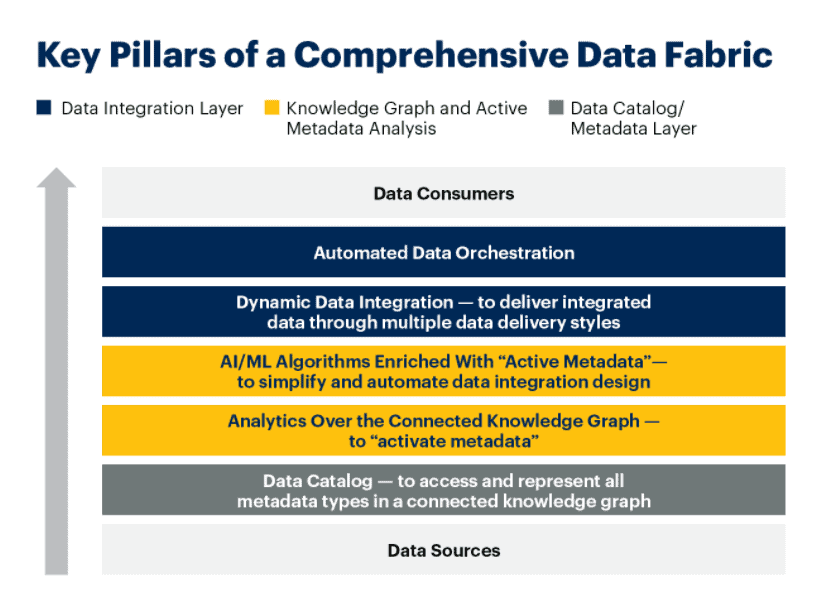
What Data Fabric Is
Data fabric combines data sources and data-management/data-delivery services into a fully integrated and flexible system. It streamlines processes and enables users to access enterprise data no matter where they are.
Benefits of Data Fabric for a Retailer
Retailers rely on comprehensive data collection, and both goods and data are more widely dispersed in 2022 than they ever have been before. Consolidate your data from inventory, order management, supply-chain systems, and customer transactions.
Flexible data fabric allows retailers to access to-the-minute data, taking advantage of real-time insights. Data fabric also positions you for future data applications and revenue streams. Its flexibility allows for discovery beyond what you can currently imagine.
Promising Tools/Companies in Data Fabric
- SAP Data Intelligence. A single-solution application for hybrid data management and analytics designed to work at scale.
- HPE Ezmeral Data Fabric. Formerly MapR, a data store and file system that unifies core, edge, and multicloud sources.
Gartner Trend #2: Cybersecurity Mesh
What Cybersecurity Mesh Is
Instead of single-perimeter cyber defenses, Gartner’s 2022 trends include cybersecurity mesh. Cybersecurity mesh is a more holistic approach to network security that integrates different, independent security services into a flexible architecture. Assets are independently protected with top-of-class security solutions for their kind, providing more local control and greater protection overall.
Benefits of Cybersecurity Mesh for a Retailer
Retailers can take advantage of the flexibility and additional protection of cybersecurity mesh. As people and devices are spread out, enterprises need a comprehensive system in which every user has exactly as much access as they need — and no more.
You can adopt the strategy to protect your business from cybersecurity challenges, and cover on-site devices and emerging physical retail technologies as well as enterprise operations.
Promising Tools/Companies in Cybersecurity Mesh
- Fortinet. More than 50 security and networking technologies designed to work together, sharing threat intelligence, correlating data, and responding to threats as a unified system.
- Blumira. Cloud-delivered SIEM that prides itself on its rapid response and ease of onboarding.

Gartner Trend #3: Privacy-Enhancing Computation
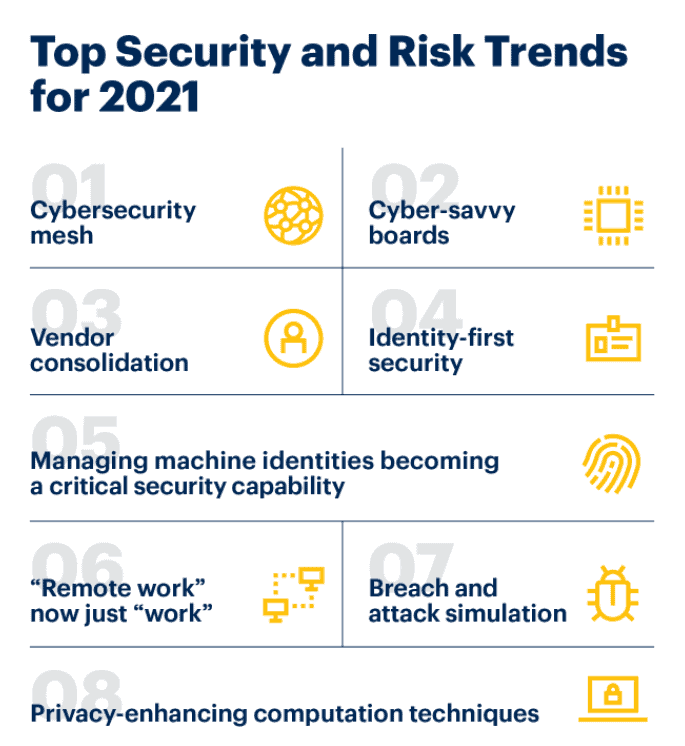
What Privacy-Enhancing Computation Is
Privacy-enhancing computation (PEC) secures personal data while still allowing other parties to extract value from that information. It enables transactions and collaboration without ever sharing sensitive information. PEC includes cryptographic algorithms, data-masking techniques, and other privacy-protection practices.
Benefits of Privacy-Enhancing Computation for a Retailer
Privacy-enhancing computation may be one of Gartner’s trends for 2022, but you can expect to see it again in 2023 and for the foreseeable future. Privacy and data protection remain major concerns for consumers, and laws continue to evolve in response. PEC lets your business maintain compliance and customer trust without hampering your operations. It also lets you share information with affiliates without violating customer privacy.
Potential applications include HR audits, fraud prevention, and internal data analysis across multinational locations. You can compile international data while still respecting multiple sets of privacy laws.
Promising Tools/Companies in Privacy-Enhancing Computation
- OneTrust. A platform that provides compliance scanning, cookie management, and related features.
- VGS. A platform that lets companies use and exchange data without ever seeing or holding it.
Gartner Trend #4: Cloud-Native Platforms
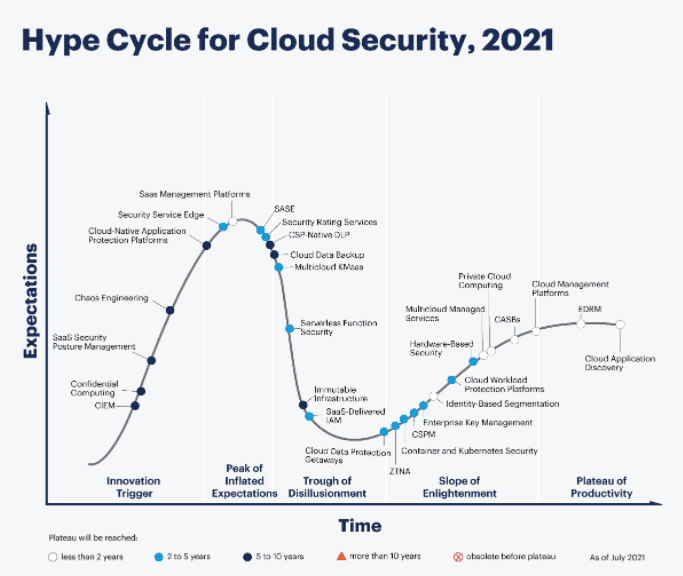
What Cloud-Native Platforms Are
Cloud-native platforms let you build applications and systems that make use of distributed computing. As a result, the applications are much more resilient and agile, enabling fast responses and requiring less maintenance.
Developers can build — and departments can run — these applications in public, private, and hybrid clouds.
Benefits of Cloud-Native Platforms for a Retailer
The cloud is here to stay, and lift-and-shift approaches are clunkier and slower than cloud-native platforms. Retailers can make use of them to build agile and resilient solutions. The shift to eCommerce and changing consumer demographics highlight the retail industry’s need for applications that can evolve with it.
Promising Tools/Companies in Cloud-Native Platforms
- Function-as-a-service (FaaS) solutions. Services consumed by other services as part of serverless computing and containers.
- Kubernetes. Open-source orchestrator used to manage complex container-based business environments.
Gartner Trend #5: Composable Applications
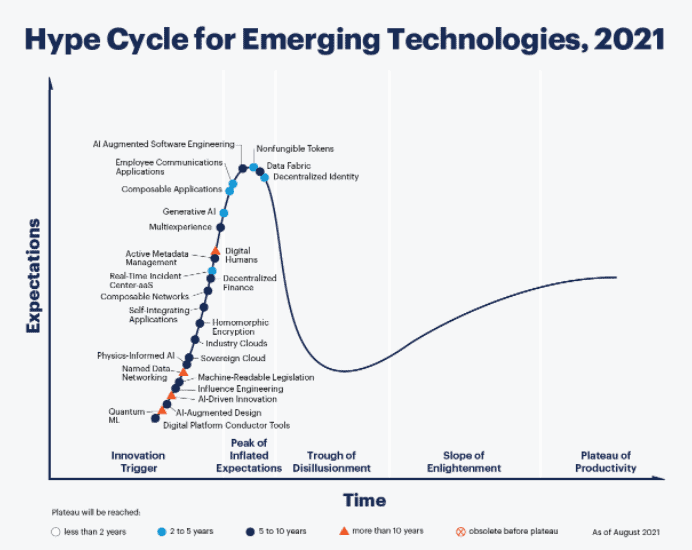
What Composable Applications Are
Composable applications are fundamentally modular. They consist of functional blocks that can be separated from one another and replaced or used elsewhere. As a result, developers can reuse code and accelerate new software solutions.
Like with cybersecurity-mesh strategies, composable applications also enable organizations to select best-of-breed elements and combine them into their ideal solution.
Benefits of Composable Applications for a Retailer
Composable applications are the heart of composable commerce, an approach to building commerce systems in which developers combine various packaged business capabilities (PBCs). Examples of PBCs include functions such as search and checkout.
As do many of these trends, composable applications contribute to a retailer’s ability to adapt to market trends and new opportunities. But retailers also gain the ability to tailor experiences in an unprecedented manner. It’s a technology investment that makes sense for businesses that prioritize personalization and omnichannel customer engagement. With composable applications, you can deliver differentiated experiences and implement them across touchpoints.
Promising Tools/Companies in Composable Applications
- Emporix. An enterprise-grade composable commerce platform designed to create innovative processes for both B2B and B2C organizations.
- Fabric. A composable commerce platform that prioritizes scalability and headless APIs that allow you to prioritize the customer experience.
Gartner Trend #6: Decision Intelligence
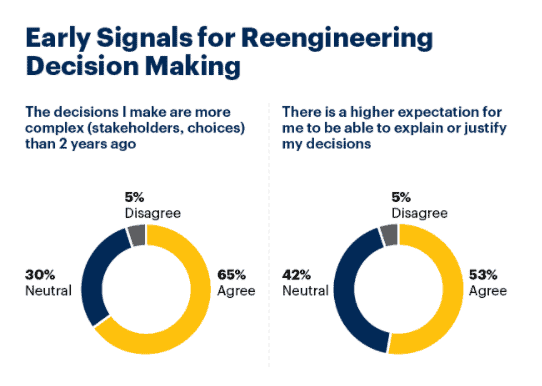
What Decision Intelligence Is
One reason smart business professionals anticipate this yearly report is the brand’s commitment to examining cutting-edge theory and strategy as well as specific technologies.
Decision Intelligence (DI), goes one step further from business intelligence (BI) and marries engineering with social and managerial science. It’s an approach to decision-making as a set of processes. Organizations can then apply data analytics to learn from previous decisions and improve future ones. In addition to supporting decision-makers, DI can increasingly automate operational decisions at scale.
Benefits of Decision Intelligence for a Retailer
With automated decision intelligence, retailers can use predictive analytics to anticipate a changing market and optimize their performance.
DI is the perfect tool to help you tailor inventory levels and automate rebuying. You can also use it to make on-the-ground decisions about product placement and promotions.
Promising Tools/Companies in Decision Intelligence
- Peak. A DI platform with three core capabilities: a data management tool kit, a hub for building AI models using centralized intelligence, and a dashboard that makes the products of the first two available to non-IT decision-makers.
- Tellius. A DI platform designed to be approachable with natural-language search functions and interactive visualization.
Gartner Trend #7: Hyperautomation

What Hyperautomation Is
Probably One of the hottest Gartner Trends of 2022. Hyperautomation is the automation of every IT and business process that can be automated. Businesses that hyperautomate streamline their operations and often reduce costs.
Whereas simple automation repeats individual tasks, hyperautomation integrates other automation tools and uses AI, machine learning, and other technologies for more intelligent automation. The resulting system is both cross-functional and scalable. Overall, we can perceive Hyperautomation as Automation in steroids as it will have an increasing role on all business operations, year after year, as machine learning technologies evolve.
Benefits of Hyperautomation for a Retailer
One use of hyperautomation in retail is in marketing. Businesses can automate campaigns and send customers the right message when they’re primed to hear it. It’s counterintuitive, but letting machines take over some marketing workflows results in unprecedented personalization with customized messages and product recommendations. Hyperautomation can also contribute to workforce satisfaction. Your teams can focus on the work they do best and let machines handle the rote tasks.
Promising Tools/Companies in Hyperautomation
- ContactPigeon. An omnichannel customer engagement platform with an array of marketing automation capabilities and easy integration with major eCommerce platforms.
- DocAcquire. Intelligent document processing that replaces manual data entry, automatically recognizing, extracting, and organizing data from documents.
Gartner Trend #8: AI Engineering
What AI Engineering Is
AI engineering combines data science, machine learning, and software development in order to design and update AI applications. Strong AI engineering streamlines AI delivery, ensuring that businesses continue to profit from their AI solutions after their initial deployment.
Benefits of AI Engineering for a Retailer
Retailers use AI across the industry. It plays a role in sales, marketing, and operations. AI engineering allows you to get the most out of your current AI applications and create new ones. Good engineering can also permit non-specialists to use AI, letting them use AI tools at all levels and in all areas of your business.
Promising Tools/Companies in AI Engineering
- SenseTime. A constellation of related proprietary technologies — SenseTime also incorporates DI capabilities.
- BluePrism. A company whose portfolio of products focuses on AI and automation, integrating a trainable, digital workforce with your human employees.
Gartner Trend #9: Distributed Enterprise
What Distributed Enterprise Is
Traditionally, a distributed enterprise is an organization with multiple branches or locations. In Gartner’s 2022 trends report, distributed enterprise refers to a business model that prioritizes digital tools and remote work in order to enable a variety of customer and employee experiences. Virtual services are key to this model, and hybrid workplaces are common.
Benefits of Distributed Enterprise for a Retailer
Today’s distributed enterprise solutions are often cheaper than staffing static locations and providing these sites with services and resources. They’re also easy to scale, and you can hire freelancers and consultants on an ad hoc basis.
For retail customers, digital touchpoints provide convenient paths to purchase, allowing them to purchase at the moment of inspiration.
Promising Tools/Companies in Distributed Enterprise
- IBM. A trusted provider with multiple tools for distributed data storage.
- Linnworks. A centralized commerce platform that allows you to manage inventory, orders, and fulfillment across all channels and locations.
Gartner Trend #10: Total Experience

What Total Experience Is
A total-experience business strategy breaks down traditional barriers between employee, customer, and user experience. The concept of total experience has grown to include what Gartner also calls multiexperience. Multiexperience is the whole experience of any individual user as they move through different modalities and touchpoints. Total experience is the sum of all four.
Benefits of Total Experience for a Retailer
In a world where every employee has a microphone, it’s impossible to separate their experiences from the customers’ interactions with your brand. As such, it makes sense to strategize with respect to total experience rather than to imagine an isolated customer experience.
That’s not to say that the customer experience has become any less important. Retail statistics for 2022 underscore the importance of the customer experience. Buyers are willing to pay more for good experiences, and both physical and digital bad experiences turn them off from brands.
Promising Tools/Companies in Total Experience
- RingCentral. A unified communication-as-a-service provider that centralizes both internal and external business communication.
Gartner Trend #11: Autonomic Systems
What Autonomic Systems Are
The concept of autonomic systems comes from biology. It refers to self-modifying, self-regulating systems that operate without conscious intervention.
In technology, autonomic systems are software systems that learn from and adapt to their environments. They automatically modify their algorithms to respond to complex and changing situations, optimizing performance and/or defending against attacks.
Benefits of Autonomic Systems for a Retailer
Investing in autonomic systems suits long-term planners — decision-makers who are ready to make use of Gartner’s trends for 2022 with an eye toward 2027. Many of these capabilities are still theoretical. But the ultimate goal is a future-proof suite of self-managing technologies.
Autonomic systems currently feature mainly in security applications. In the shorter term, retailers can improve security while minimizing maintenance.
Promising Tools/Companies in Autonomic Systems
- Google Cloud Autonomic Security Operations. A technology stack and prescriptive solution designed to modernize businesses’ security operations.
- IBM. The company that originated the term almost 20 years ago — IBM looks to gradually introduce autonomic features into its products.
Gartner Trend #12: Generative AI
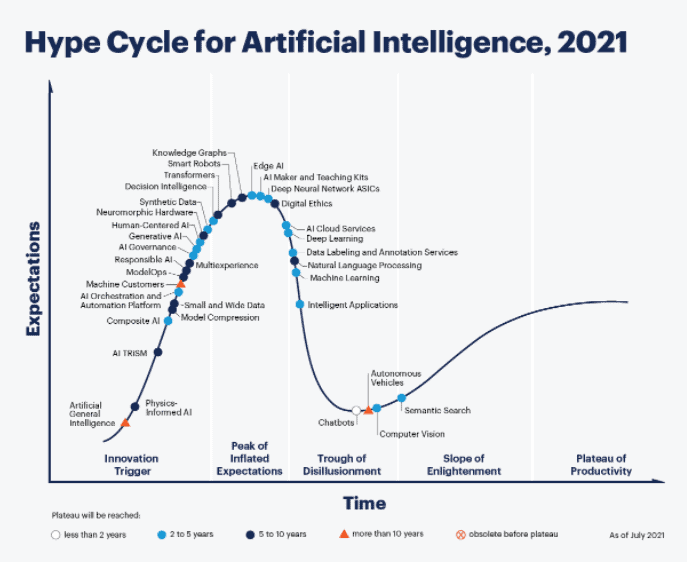
What Generative AI Is
Generative AI creates new material by analyzing data from old material. Its products are similar but not identical to the original. In addition to research and development, generative AI can play a role in content creation. It can find the underlying patterns and put media files together in new ways.
Benefits of Generative AI for a Retailer
Save time. Retailers can use generative AI to produce new content, playing with image conversions and translations between media. It can even do some of your writing. Let the tool do your product descriptions and subject lines. Messages can even be personalized.
As for chatbots, generative AI is making chatbot dialogue increasingly complex and seemingly organic.
Promising Tools/Companies in Generative AI
- Signum.ai. An AI-based campaign automation platform that can even automate a full Facebook campaign, from design to launch to data collection.
- Synthesia. A video creation tool that quickly produces personalized videos using AI.
More resources for retailers similar to Gartner Trends
Gartner’s 2022 trends report is only the beginning of the thought-leadership resources available to retail businesses. Check out these other high-value publications:
- 2022 CIO Agenda: Create an Action Plan to Master Business Composability
- Digital Transformation in Retail
- Top Trends in Retail Digital Transformation and Innovation for 2021
- Martech Trends 2022: 48 industry experts share their insights
- Retail Trends 2022: 101 industry experts share their predictions
- The 12 key omnichannel retail trends of 2023
Turn Inspiration Into Execution
What does your business need the most? As you read about Gartner’s technology trends for 2022, which seemed to best fit your needs? Gartner has provided valuable annual insights, and we’ve expanded on each item on the list. We’ve looked at their applications in a retail context and identified a couple of powerhouses in the field.
Now, the hard part is up to you. Only you can make the final decisions and turn inspiration into execution. Identify your priorities and research potential tools and partners. It’s time to convert your new knowledge into real results and we’re here to help. Book your free 30-minute customer engagement consultation call today. Let’s take the next step together.

Let’s Help You Scale Up


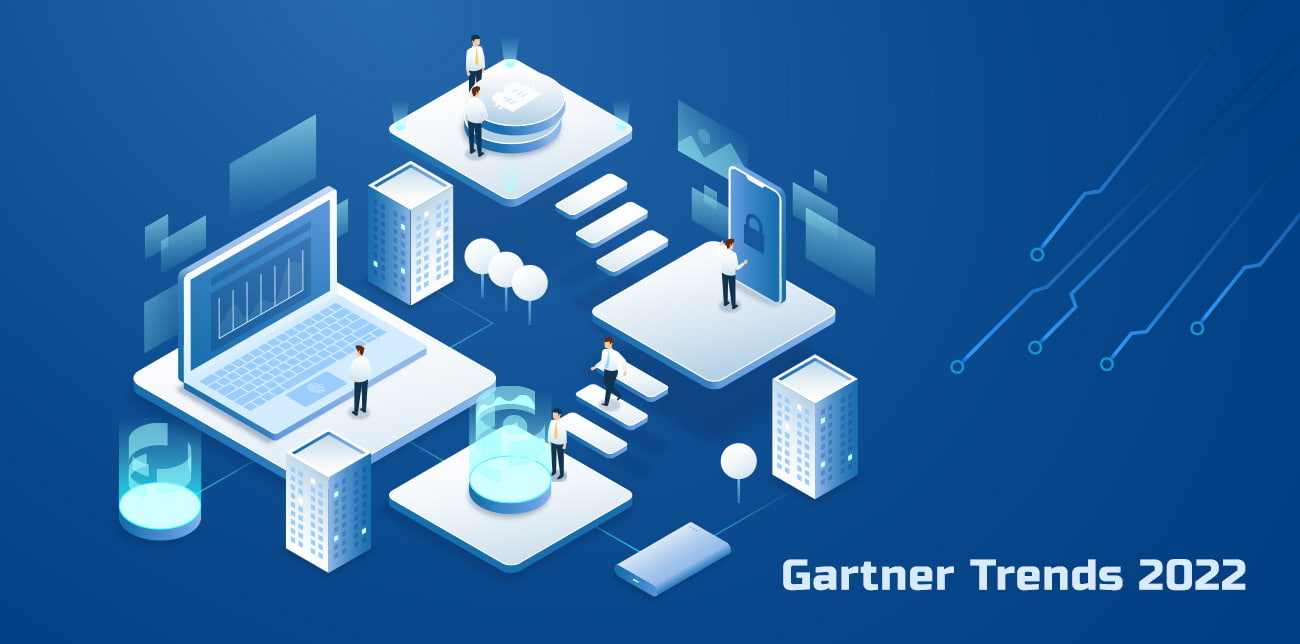

![Benchmarking Growth Strategies of Top Fashion Retailers [Study]](https://blog.contactpigeon.com/wp-content/uploads/2025/11/top-fashion-retailers.jpg)